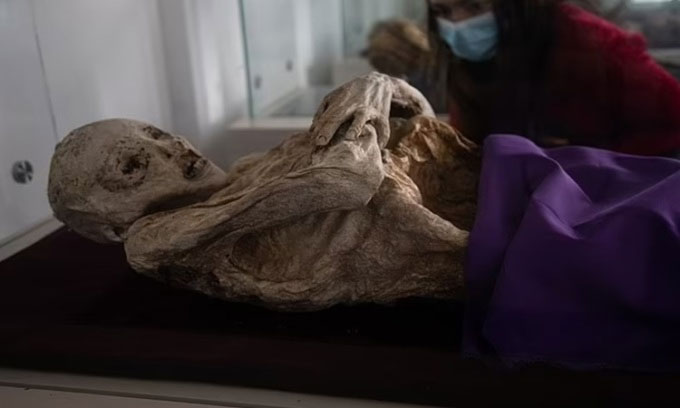eResearchers suspect the San Bernardo cemetery’s humidity and mountainside location helped dry the bodies and create natural mummies.
The phenomenon of natural mummies has been discovered in more than 100 bodies exhumed from the San Bernardo town cemetery since the 1960s. In many cases, the bodies still retain their hair and fingernails, even skin tissue and bones. eyeballs, which are among the first parts to decompose after burial, the Mail reported on April 29.
 Many mummies in San Bernardo still have intact skin tissue and fingernails. (Photo: Anadolu Agency).
Many mummies in San Bernardo still have intact skin tissue and fingernails. (Photo: Anadolu Agency).
Locals have long believed that bodies became mummies due to their active farming lives, or believed it was a reward for living too well. But new research has found a scientific explanation for the phenomenon of bodies becoming mummies. It could be a combination of humidity and the steep terrain of the mountainside on which the cemetery is located.
Mummies were first discovered when exhumed from the San Bernardo cemetery in 1963. In the late 1980s, about 50 mummies were found each year. Researchers have recorded a similar natural mummy phenomenon in Guanajuato, Mexico, where underground gas and the chemical composition of the soil layer help the body not decompose. However, the mummy in Guanajuato dates from the first half of the 19th century while the mummy in San Bernardo is relatively young.
Embalming is the process of preserving a body after death by drying it or using a compound that prevents decomposition. But the bodies in San Bernardo became mummies by accident . After burying the body, teeth and fingernails fall out after only about 3-5 days but take several decades to decompose, leaving behind skeletons and traces of hair, skin tissue and clothing fibers.
However, when town resident Clovisnerys Bejarano exhumed her mother’s body in 2001 and after three decades of burial, she discovered that her mother looked as if she were fast asleep, still intact and wearing morning clothes. burial. Bejarano’s mother’s mummy is on display at the museum at Jose Arquimedes Castro’s mausoleum along with 13 other bodies excavated from the San Bernardo cemetery.
Researchers studying the mummy phenomenon have found no general pattern as to how or why bodies become mummies. According to them, the bodies came from many areas in the cemetery with different age groups and genders.
At first, scientists believed that the mummification process occurred due to the deceased’s healthy diet and active lifestyle, but a person from Bogota, a city about 64.4km from San Bernardo, contradicted this. this hypothesis. The team now turns to another possibility: the temperature from the grave combined with the cemetery’s elevated location could resemble a pan.
Anthropologist Daniela Betancourt of the National University of Colombia believes that the cause may be the steep slope of the mountain. ” The wind often blows when it’s hot. You can imagine the crypt as a pan drying the body ,” Betancourt explained. She also emphasized that there has not been much research on what happens and the specific conditions that turn people’s bodies into mummies. Therefore, the above hypothesis needs to be tested further.





